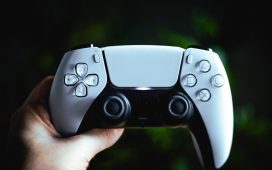In December, Apple was briefly banned from selling its two most recent watch models—Series 9 and Ultra 2—in the US, due to an ongoing patent dispute with Masimo, a medical device maker. The dispute reflects the rivalry in the smartwatch market, dominated by Apple at present. That position is at stake as competition intensifies.
In December, Apple was briefly banned from selling its two most recent watch models—Series 9 and Ultra 2—in the US, due to an ongoing patent dispute with Masimo, a medical device maker. The dispute reflects the rivalry in the smartwatch market, dominated by Apple at present. That position is at stake as competition intensifies.
The fight is crucial for Apple as it seeks to strengthen its revenue streams beyond iPhones. Although the iPhone’s contribution to its total net sales has dropped from 62% in 2017-18, it was still a hefty 52% in 2022-23. Meanwhile, the share of wearables, home and accessories, which includes Apple Watch and Apple AirPods, grew from 6.5% to 10.4%.
Hi! You’re reading a premium article
The fight is crucial for Apple as it seeks to strengthen its revenue streams beyond iPhones. Although the iPhone’s contribution to its total net sales has dropped from 62% in 2017-18, it was still a hefty 52% in 2022-23. Meanwhile, the share of wearables, home and accessories, which includes Apple Watch and Apple AirPods, grew from 6.5% to 10.4%.
Apple, today, dominates the global smartwatch market, with a share of 22%. In the high-end HLOS (high-level operating system) segment, its market share in July-September 2023 was a leading 45%, according to Counterpoint Research. To target the top end of the HLOS market, Apple will have to fight companies such as Garmin, which has a loyal base of outdoor sport and fitness enthusiasts who swear by the range and accuracy of fitness metrics its devices offer. Apple’s recent ban was related to its infringement of Masimo’s wireless pulse oximeter patent.
The sale of Apple smartwatches is also tied to smartphones. In the US, its ‘attach rate’ (the percentage of iPhone users also owning an Apple Watch) was 30% in 2022. However, the Apple stock got two downgrades in early January from Barclays and Piper Sandler, both citing concerns around iPhone sales.
The Huawei challenge
While Apple dominates the smartwatch market globally, it trails Huawei and imoo in China. Huawei’s market share in China jumped from 26% in Q2 of 2022 to 39% in Q2 of 2023, while that of Apple Watches dropped from 16% to 13%, according to Counterpoint Research. Since China accounts for a fifth of the global smartwatch market, Huawei’s global share has also increased.
One reason is Huawei’s resurgence in smartphones. Last October, Bloomberg reported that the sale of the iPhone 15 series in China dropped by 6% compared with the prior year, while Huawei’s Mate 60 series doubled its sales in the launch month compared to a year ago. Huawei’s bundled sales model (clubbing smartwatches with phones) also helped, according to Counterpoint Research. Meanwhile, Apple has been facing other headwinds in China. Last September, the Wall Street Journal reported that China has banned government officials from using iPhones at work.
Price-sensitive India
In India, Apple’s challenge is to match its growing iPhone sales with watch sales. It recorded revenues of $5.9 billion in 2022-23, up 47.8% from the previous year. It was expected to ship 9 million iPhones in 2023, against 6.5 million in 2022. Its attach rates are low. Only last year, it opened the first Apple stores in India, which could drive cross-selling.
In India, Noise and Fire-Boltt control half the smartwatch segment. Apple doesn’t feature in the top five. India could offer Apple a huge opportunity in smartwatches, too. India accounted for 34% of global shipments in Q2 of 2023, up from 22% in the previous year, according to Counterpoint Research. However, India is price-sensitive, and the growth is currently driven by basic smartwatches, running a lighter version of an operating system, with no ability to install third-party apps. Its success depends on increasing attach rates.
Wearables opportunity
While downgrading Apple’s stock, Barclays raised concerns over the company’s lack of new products. While noting that Apple successfully moved from a Mac-driven to an iPhone-driven ecosystem over the last decade, it observed that there was “less ecosystem pull-through with new products/services”, which could make growth harder over “the next several years”.
Smartwatches might still have some juice. IDC expects the share of smartwatches in wearables to increase from 32% now to 34% by 2027, with average annual growth of 6.3%. However, Apple will have to face its small rivals climbing the value chain. Last October, the research director of the wearables team at IDC noted that many small players driving growth are focused on specific geographies such as China and India. “Looking ahead, it isn’t too hard to imagine some of these brands being mentioned in the same breath as the world’s most popular ones,” he wrote.










